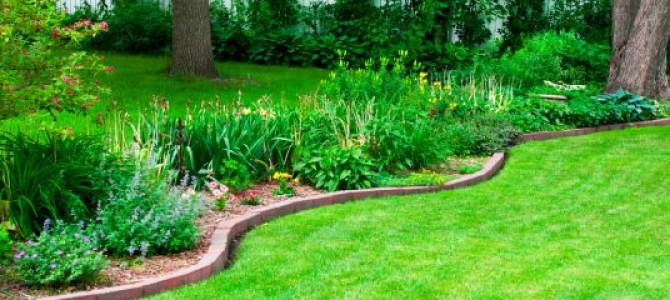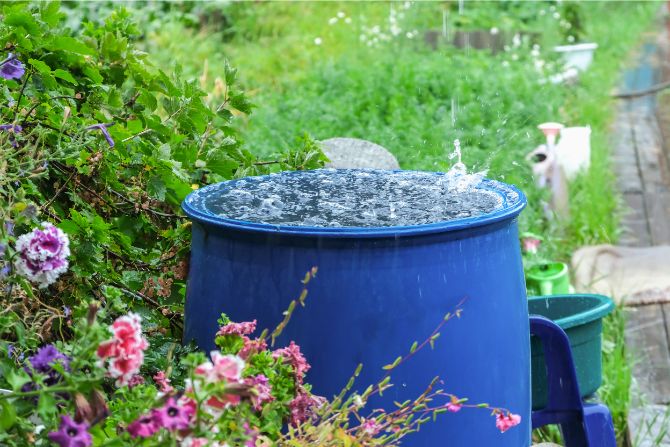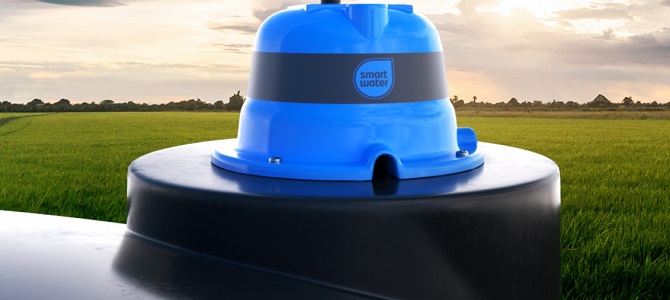 Shopping Cart
Shopping Cart
17 May 2024
Is Rainwater Safe for Your Lawn and Garden? Demystifying Rainwater Harvesting

Summer's on its way in the Northern Hemisphere, and with it comes the constant battle to keep our lawns and gardens thriving. Water restrictions loom, and the hosepipe ban beckons, especially in some of the hotter States in the US. But what if there was a free, natural source of water readily available – right above your head?
Enter rainwater harvesting – a sustainable way to quench your thirsty plants and save money on your water bill. But is rainwater safe for your precious greenery? Let's break down the myths and explore the hidden potential of this eco-friendly practice.
The Purity of Rainwater Compared to Other Water Sources

Rainwater boasts several advantages over tap water. Firstly, it's naturally soft, lacking minerals like calcium and magnesium that can build up in soil, impacting plant health. Secondly, rainwater often contains trace amounts of nitrogen, a crucial plant nutrient. Studies have shown that plants watered with rainwater can even grow faster and stronger compared to those watered with tap water.
Common Concerns Addressed
Pollutants
One of the main concerns about using rainwater in gardens is the potential presence of airborne pollutants. While it's true that industrial areas may see higher levels of contaminants, these are generally in minimal concentrations and not harmful to plants. For those living near heavily industrialised zones, a simple solution exists—divert the first flush of rainwater away from your collection system to avoid the initial runoff that might carry higher pollutant loads.
Acidity and Bacteria
Rainwater's slight acidity is another point of contention. However, this acidity is usually neutralised quickly by the soil, and most plants thrive within a wide pH range, rendering the concern relatively moot. Regarding bacteria, while standing water can indeed become a breeding ground for mosquitoes, proper storage and regular maintenance of rainwater collection systems can mitigate this risk effectively. This is why we always recommend that you get the water tested.
Is Rainwater Good for My Garden?
Hopefully with these common concerns answered, we can get back to the more pertinent question at hand which relates to whether rainwater is actually better for your lawn and plants than watering from the municipal supply.
Rainwater is particularly beneficial for grass and plants due to its natural composition and absence of chemical additives often found in tap water. Unlike treated water, which frequently contains chlorine, fluoride, and other compounds designed to make it safe for human consumption, rainwater is pure and free from these additives. This purity helps grass and plants absorb nutrients more efficiently, resulting in lush, healthy growth. Additionally, the trace amounts of nitrogen present in rainwater serve as a natural fertiliser, promoting vibrant green lawns and robust plant development.

Rainwater is exceptionally advantageous for various types of plants, not just lawns, due to its optimal mineral composition and naturally occurring nutrients. Plants primarily require nitrogen, phosphorus, and potassium for healthy growth, and rainwater typically contains these elements in small but beneficial quantities. Additionally, rainwater is free from salts and chemicals often found in tap water, which can build up in soil over time and hinder plant growth. The natural softness of rainwater allows for better soil penetration and nutrient absorption, catering to deeper roots and resulting in more resilient plants. Furthermore, the slight acidity of rainwater can help balance soil pH levels, making essential nutrients more accessible for a variety of plant species.
If you usually water your garden using your mains supply, take a look out the next time it rains and see how much greener your lawn and plants look in the garden. You can also read our post on "Rainwater vs Tap Water: What's the Difference?" to find out more.
The Basics of Rainwater Harvesting
Collecting rainwater requires minimal equipment, often just rain barrels, cisterns, and possibly pumps for larger gardens. The process is straightforward, with rainwater being collected from rooftops and stored for later use. Calculating your rainwater harvesting potential involves assessing the collection surface area and local rainfall statistics, empowering you to make informed decisions about your system's size and complexity.
Environmental and Economic Benefits
The adoption of rainwater harvesting brings with it numerous perks, notably reducing demand on municipal water supplies and contributing to stormwater management efforts. Economically, it can lead to significant savings on water bills, especially in regions with water scarcity issues or stringent usage restrictions.
Practical Tips for Home Implementation
Choosing the right system depends on your specific needs and garden size. Maintenance is crucial—regularly check for debris and clean your collection system to ensure optimal performance. Also, be mindful of local laws and regulations regarding rainwater harvesting, as these can vary widely.
Monitoring Your Harvested Rainwater
One of the factors that can influence whether you implement a rainwater harvesting system is your ability to monitor the water levels in your tank. Historically, this might have been done using some sort of floating device or even just a manual visual check, however, today, technology is helping to solve this issue, especially for households that rely on harvested rainwater as their primary water supply, not just in the garden but also in the home.

Smart water tank level indicators are revolutionising our ability to manage water efficiently. By providing real-time data, these devices empower users to make informed decisions that lead to significant water savings, cost reductions, and environmental benefits. Talk to the team at Smart Water today to find out more about our range of water tank level indicators.
Case Studies and Success Stories
From urban rooftops to rural homesteads, success stories of rainwater harvesting abound, showcasing its viability across a broad spectrum of environments. Community initiatives have also seen great success, with shared systems providing sustainable water solutions for entire neighbourhoods.
Case Studies from the USA, Australia, and New Zealand
United States: American Rainwater Catchment Systems Association (ARCSA)
In Seattle, Washington, homeowners and businesses are increasingly adopting rainwater harvesting systems to combat the city's seasonal droughts. One notable example is the Bullitt Center, often referred to as the greenest commercial building in the world. The building utilises an extensive rainwater harvesting system, which includes a 56,000-gallon cistern to collect and treat rainwater for potable use. This system has significantly reduced the building’s dependency on the municipal water supply, showcasing the effectiveness of rainwater harvesting in urban environments.
Australia: Sydney’s Barangaroo South Project
In Australia, Sydney's Barangaroo South development serves as a pioneering example of sustainable urban design. This commercial and residential precinct features a state-of-the-art rainwater harvesting system that captures rainwater from rooftops and public spaces. The collected water undergoes treatment and is then used for irrigation, toilet flushing, and cooling tower makeup. This initiative has greatly diminished the precinct's reliance on mains water, highlighting the role of rainwater harvesting in progressive city planning.

New Zealand: Waiheke Island’s Community Effort
On Waiheke Island near Auckland, New Zealand, a community-driven project has successfully implemented rainwater harvesting to foster self-sufficiency. Many households on the island rely primarily on rainwater for all their water needs due to the absence of a municipal water supply. The Waiheke Resources Trust has been instrumental in promoting the benefits of rainwater harvesting and assisting in the installation of tanks and filtration systems. This communal effort has led to improved water security and conservation on the island, serving as a model for other remote communities.
Embrace Rainwater Harvesting for a Sustainable Summer
Rainwater harvesting stands out as a safe, effective, and environmentally friendly way to water your lawn and garden. By understanding and implementing proper collection and storage techniques, you can enjoy the myriad benefits this practice offers, contributing to a healthier planet in the process.
As we continue to explore sustainable practices, rainwater harvesting emerges as a beacon of hope for eco-friendly home enthusiasts and garden lovers alike. It's more than just an alternative water source—it's a step towards a more sustainable and self-sufficient lifestyle.
